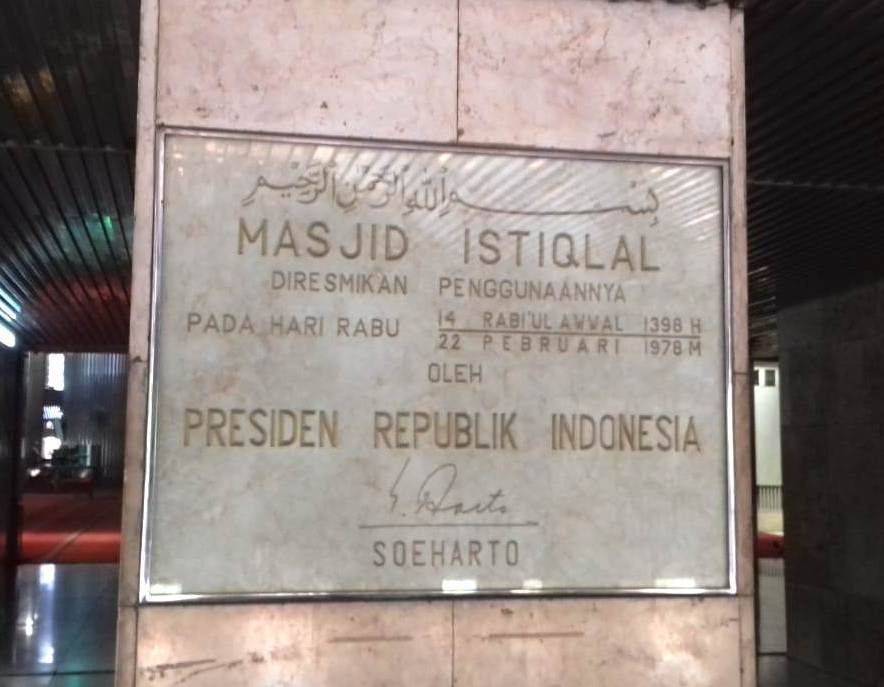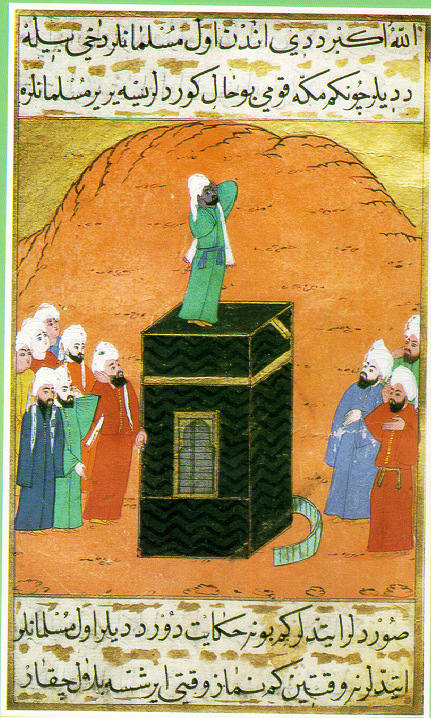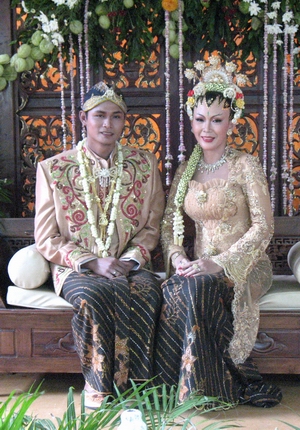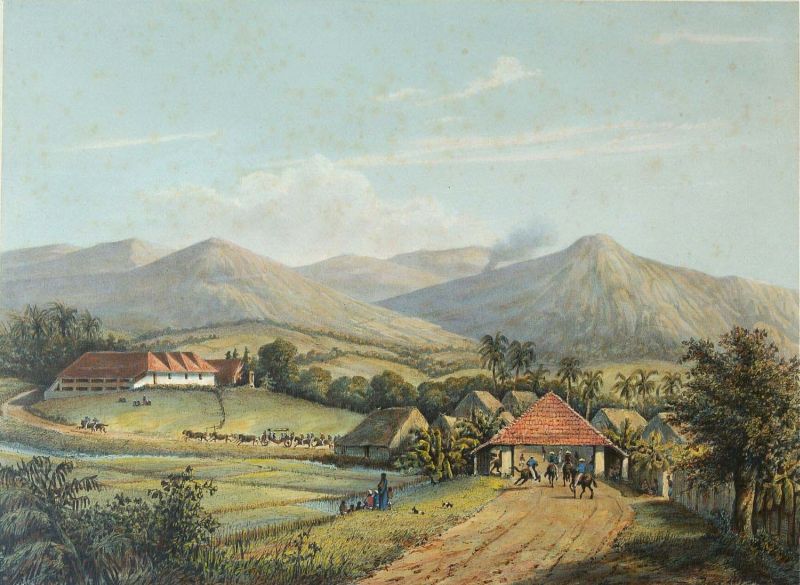|
Bedug
The ''bedug'' is one of the drums used in the gamelan. It is also played in mosques in Indonesia and Malaysia to signal prayer times. The hitting of the instrument is particularly done according to a rhythm that goes in an increasingly rapid (or ''accelerando'') pace. Overview A ''bedug'' is a large double-headed drum with water buffalo or cow leather on both ends. Unlike the more frequently used ''kendang'', the ''bedug'' is suspended from a frame and played with a padded mallet. The ''bedug'' is as large as or larger than the largest ''kendang'' and generally has a deeper and duller sound. The drum has pegs holding the two identical heads in place, similar to the Japanese ''taiko'', and its pitch is not adjustable. Usage thumb , 200px, left, ''Bedug'' at the Samarinda Islamic Center mosque. The ''bedug'' is not used in most gamelan performances, although it is included in some Yogyakarta ''kendang'' styles. It is used in special ensembles such as the '' gamelan sekate ... [...More Info...] [...Related Items...] OR: [Wikipedia] [Google] [Baidu] |
Istiqlal Mosque, Jakarta
Istiqlal Mosque (; ) in Jakarta, Indonesia is the largest mosque in Southeast Asia and the List of largest mosques, ninth largest mosque in the world in terms of worshipper capacity. Built to commemorate Indonesian independence, this List of mosques, national mosque of Indonesia was named "Istiqlal", an Arabic word for "independence". The mosque was opened to the public on 22 February 1978. Within Jakarta, the mosque is positioned next to Merdeka Square, Jakarta, Merdeka Square, the Jakarta Cathedral (Catholic), and also of the Immanuel Church, Jakarta, Immanuel Church (Continental Reformed church, Reformed). History The mosque was formerly the location of Wilhelmina Park and a 19th-century fortification called Citadel Prins Frederik, Citadel. Design and competition After the Proclamation of Indonesian Independence, proclamation of Indonesian independence in 1945, the idea of constructing a grand Indonesian national mosque was raised by Wahid Hasyim, Indonesia's first minis ... [...More Info...] [...Related Items...] OR: [Wikipedia] [Google] [Baidu] |
Kendang
A ''kendang'' or ''gendang'' (, , , Tausug language, Tausug/Bajau/Maranao language, Maranao: ''gandang'', Buginese language, Bugis: ''gendrang'' and Makassarese language, Makassar: ''gandrang'' or ''ganrang'') is a two-headed drum used by people from the Indonesian Archipelago. The kendang is one of the primary instruments used in the gamelan ensembles of Javanese music, Javanese, Music of Sunda, Sundanese, and Balinese music, Balinese music. It is also used in various Kulintang ensembles in Indonesia, Brunei, Malaysia, Singapore, and the Philippines. It is constructed in a variety of ways by different ethnic groups. It is related to the Indian double-headed mridangam drum. Overview The typical double-sided membrane drums are known throughout Maritime Southeast Asia and India. One of the oldest image of kendang can be found in Candi of Indonesia, ancient temples in Indonesia, especially the ninth century Borobudur and Prambanan temple. Among the Javanese people, Javanese, Sund ... [...More Info...] [...Related Items...] OR: [Wikipedia] [Google] [Baidu] |
Salat
''Salah'' (, also spelled ''salat'') is the practice of formal ibadah, worship in Islam, consisting of a series of ritual prayers performed at prescribed times daily. These prayers, which consist of units known as rak'a, ''rak'ah'', include a specific set of physical postures, recitation from the Quran, and prayers from the Sunnah, and are performed while facing the direction towards the Kaaba in Mecca (''qibla''). The number of ''rak'ah'' varies depending on the specific prayer. Variations in practice are observed among adherents of different ''Madhhab, madhahib'' (schools of Islamic jurisprudence). The term ''salah'' may denote worship in general or specifically refer to the obligatory prayers performed by Muslims five times daily, or, in some traditions, three times daily.Jafarli, Durdana. "The historical conditions for the emergence of the Quranist movement in Egypt in the 19th-20th centuries." МОВА І КУЛЬТУРА (2017): 91. The obligatory prayers play an integ ... [...More Info...] [...Related Items...] OR: [Wikipedia] [Google] [Baidu] |
Adhan
The (, ) is the Islamic call to prayer, usually recited by a muezzin, traditionally from the minaret of a mosque, shortly before each of the five obligatory daily prayers. The adhan is also the first phrase said in the ear of a newborn baby, and often the first thing recited in a new home. It is the first call summoning Muslims to enter the mosque for obligatory () prayers (); a second call, known as the , summons those already in the mosque to assemble for prayer. Muslims are encouraged to stop their activities and respond to the adhan by performing prescribed prayers, demonstrating reverence for the call to prayer and commitment to their faith. The five prayer times are known in Arabic as (), (), (), (), and (). In Turkey, they are called , and ; the five calls to prayer are sung in different makams, corresponding to the time of day. Terminology , Arabic for 'announcement', from the root , meaning 'to listen, to hear, be informed about', is variously transliterated ... [...More Info...] [...Related Items...] OR: [Wikipedia] [Google] [Baidu] |
Sundanese People
The Sundanese (; ) are an Austronesian people, Austronesian ethnic group native to Java in Indonesia, primarily West Java. They number approximately 42 million and form Ethnic groups in Indonesia, Indonesia's second most populous ethnic group. They speak the Sundanese language, which is part of the Austronesian languages. The western area of the island of Java, namely the provinces of West Java, Banten, and Jakarta, as well as the westernmost part of Central Java, is called by the Sundanese people ''Tatar Sunda'' or ''Pasundan'' (meaning Sundanese land). Sundanese migrants can also be found in Lampung, South Sumatra, and, to a lesser extent, in Central Java and East Java. The Sundanese people can also be found on several other islands in Indonesia such as Sumatra, Kalimantan, Sulawesi, Bali and Papua (province), Papua. Origins Migration theories The Sundanese are of Austronesian peoples, Austronesian origins and are thought to have originated in Taiwan. They migrated through th ... [...More Info...] [...Related Items...] OR: [Wikipedia] [Google] [Baidu] |
Javanese People
The Javanese ( , ; ) are an Austronesian peoples, Austronesian ethnic group native to the central and eastern part of the Indonesian island of Java. With more than 100 million people, Javanese people are the largest ethnic group in both Indonesia and in Southeast Asia as a whole. Their native language is Javanese language, Javanese, it is the largest of the Austronesian languages in List of languages by number of native speakers, number of native speakers and also the largest regional language in Southeast Asia. As the largest ethnic group in the region, the Javanese have historically dominated the social, political, and cultural landscape of both Indonesia and Southeast Asia. There are significant numbers of Javanese diaspora outside of Central Java, central and East Java, eastern Java regions, including the other provinces of Indonesia, as well as other countries such as Suriname, Singapore, Malaysia, Egypt, Saudi Arabia, South Africa, Sri Lanka, Yemen and the Netherlands. ... [...More Info...] [...Related Items...] OR: [Wikipedia] [Google] [Baidu] |
Java
Java is one of the Greater Sunda Islands in Indonesia. It is bordered by the Indian Ocean to the south and the Java Sea (a part of Pacific Ocean) to the north. With a population of 156.9 million people (including Madura) in mid 2024, projected to rise to 158 million at mid 2025, Java is the world's List of islands by population, most populous island, home to approximately 55.7% of the Demographics of Indonesia, Indonesian population (only approximately 44.3% of Indonesian population live outside Java). Indonesia's capital city, Jakarta, is on Java's northwestern coast. Many of the best known events in Indonesian history took place on Java. It was the centre of powerful Hindu-Buddhist empires, the Islamic sultanates, and the core of the colonial Dutch East Indies. Java was also the center of the History of Indonesia, Indonesian struggle for independence during the 1930s and 1940s. Java dominates Indonesia politically, economically and culturally. Four of Indonesia's eig ... [...More Info...] [...Related Items...] OR: [Wikipedia] [Google] [Baidu] |
Javanese Dancing
Javanese dance (; ) is the dances and art forms that were created and influenced by Javanese culture in Indonesia. Javanese dance movement is controlled, deliberate, and refined. Javanese art often displays finesse, and, at the same time, a serene composure which is elevated far above everything mundane. Javanese dance is usually associated with courtly, refined, and sophisticated culture of the Javanese kratons, such as the '' bedhaya'' and '' srimpi'' dance. However, in a wider sense, Javanese dance also includes the dances of Javanese commoners and villagers, such as ''ronggeng, tayub, reog,'' and '' jaran kepang''. Javanese dance and its discipline has different styles and philosophy compared to other Indonesian dance traditions. Unlike vigorous and expressive Balinese dance or cheerful and slightly sensual Sundanese dance, Javanese dance are commonly involving slow movements and graceful poses. Javanese dance have somewhat a meditative quality and tends to be more self-r ... [...More Info...] [...Related Items...] OR: [Wikipedia] [Google] [Baidu] |
Kempul
A kempul is a type of hanging gong used in Indonesian gamelan. The kempul is a set of pitched, hanging, knobbed gongs, often made of bronze, wood, and cords. Ranging from in diameter, the kempul gong has a flat surface with a protruding knob at the center and is played by hitting the knob with the "soft end of a mallet." "The wooden mallet used has a ball shape head with heavy padding on a short wooden handle. The number of kempul gongs present in a gamelan ensemble varies but, "although there can be two to ten kempul on one separate rack, it is common to have five kempul hanging on the same rack as the Gong ageng and gong siyem" (two larger gongs). Kempul in music "Generally, the instruments in a gamelan orchestra may fall into the following three functional categories: # Instruments that delineate the structure of the piece; # Instruments that guide temporal flow of the music; # Instruments that carry melodies in both simple and elaborate forms" "Instruments in the firs ... [...More Info...] [...Related Items...] OR: [Wikipedia] [Google] [Baidu] |
Yogyakarta
Yogyakarta is the capital city of the Special Region of Yogyakarta in Indonesia, in the south-central part of the island of Java. As the only Indonesian royal city still ruled by Hamengkubuwono, a monarchy, Yogyakarta is regarded as an important centre for classical Javanese culture, Javanese fine arts and culture such as ballet, ''batik'' textiles, drama, Javanese literature, literature, music of Java, music, Javanese poetry, poetry, silversmithing, visual arts, and ''wayang'' puppetry. Renowned as a centre of Education in Indonesia, Indonesian education, Yogyakarta is home to a large student population and dozens of schools and universities, including Gadjah Mada University, the country's largest institute of higher education and one of its most prestigious. Yogyakarta is the capital of the Yogyakarta Sultanate and served as the Indonesian capital from 1946 to 1948 during the Indonesian National Revolution, with Gedung Agung as the president's office. One of the districts in s ... [...More Info...] [...Related Items...] OR: [Wikipedia] [Google] [Baidu] |







